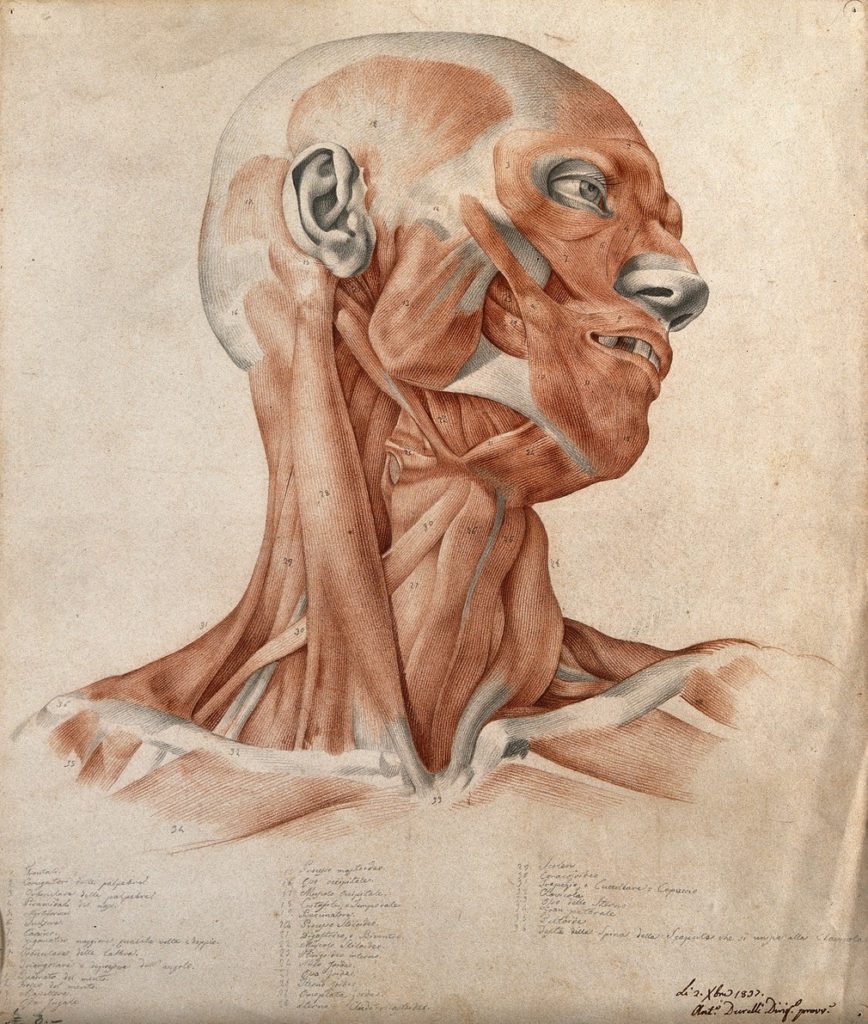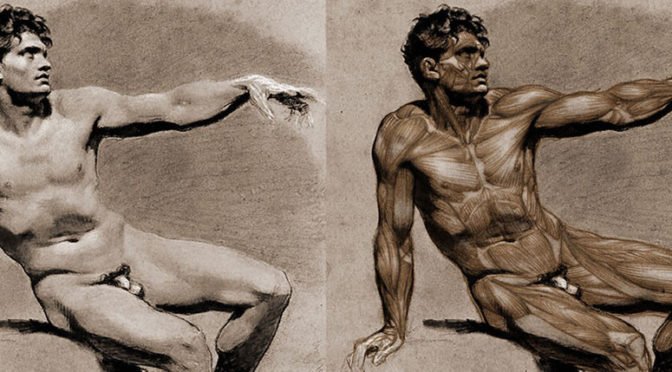Écorché is a word coined by the École Des Beaux Arts to describe a figure that is drawn, painted, or sculpted without skin to reveal the muscles and bones below. It literally translates to “flayed or skinned”.

In Western Europe this teaching practice went back to the Italian Renaissance. Long associated with masters such as Leonardo da Vinci, Andreas Vesalius & Honore Fragonard, it is used today as a form of study for the human form at many top art schools including the New York Academy of Art, the Art Students League of New York and the Florence Academy of Art in Italy.
Without mastery of the human figure, its skeleton and muscle masses, figures in art look rubbery or the portrait equivalent of the clay humanoid animation Mr. Gumby.

Occidental anatomy is the structural foundation for realism in drawing, painting, or sculpture, but also for medical treatment and forensic facial reconstruction.
Christians believed the body and the soul were connected and forbade doctors from viewing (much less dissecting) the human body.

It was not until the election of Pope Boniface VIII (d.1303) was the practice allowed. Even so, it was not until a century later during the early Renaissance for these studies to be embraced. Leonardo da Vinci (b.1452-d.1519) emerged as a major contributor and became known as the artist-anatomist to the new science of “anatomy”. He was the first to draw a fetus in utero but unfortunately got many of the female reproductive organs incorrect. (Female corpses were difficult to come by).
Finding cadavers to develop this practice is as interesting as the drawings themselves.

When Michelangelo was seventeen he stayed at the convent of Santa Maria del Santo Spirito in Paris after the death of Lorenzo de’Medici. Its hospital regularly practiced dissection on its bodies. Michelangelo traded his sculpting abilities to make a crucifix for their Basilica in exchange for access to their corpses.
Many cadavers up to 200 years ago have been hanging victims.

Medical schools advanced quickly when painters and sculptors began working with doctors. By the 17th and 18th century, dissections became a standard practice in medical schools. A few doctors were also artists.
In the East, écorché is known as Jing-Shui and it was mastered 1500 years before the West. During the Chinese Han Dynasty (16 C.E.), Emperor Wang Mang ordered the body of a criminal to be slowly deconstructed from skin to bone. Everything was recorded and drawn systematically. Bamboo rods were inserted into blood vessels to discover where they began and where they ended. It was the foundation of what we now know as acupuncture.

Today artists and healers use écorché models made from plaster, wax, wood, wax, resin, bronze, ivory, and even apps on their phone.
Medical schools still dissect bodies for their training. Bodies donated to science are given to nonprofits such as The Anatomical Gift Associationwho embalm and transfer them to institutions. (Only bodies with all their organs are accepted).
As of 2018, member medical schools pay about $1300 per corpse, non-members $2300.
Thank you for reading this article. For more articles on what galleries look for in an artist and other art eccentricities, please click through to the articles below.
- What Galleries Look for When You Submit Your Art for Representation • Uriél Danā Fine Art
- Art Critics: Keeping Art In Its Proper Framework • Uriél Danā Fine Art
- Museums In The 21st Century: The Invisible Intimacy Of Public Palaces • Uriél Danā Fine Art
Cover image: Scott Eaton Anatomy Course

